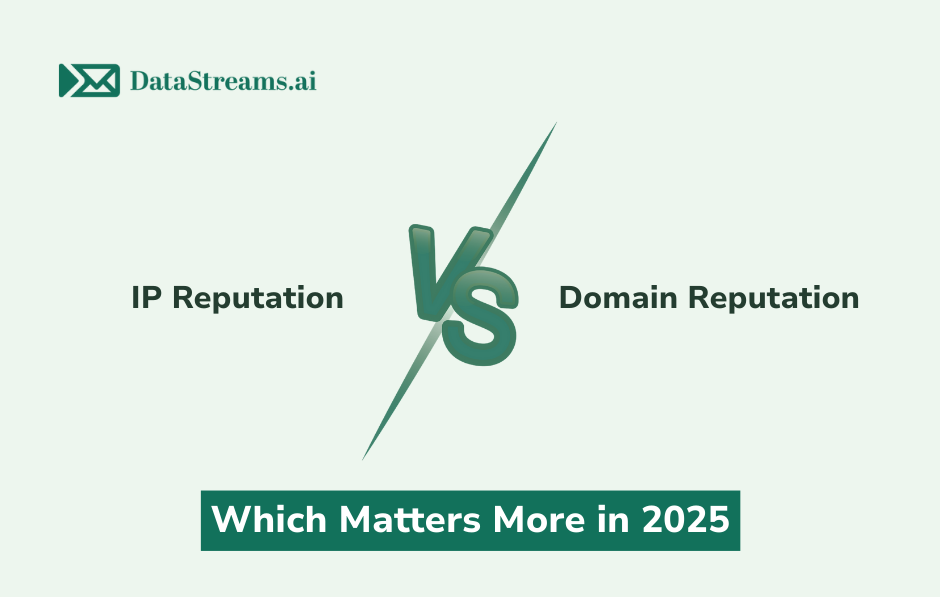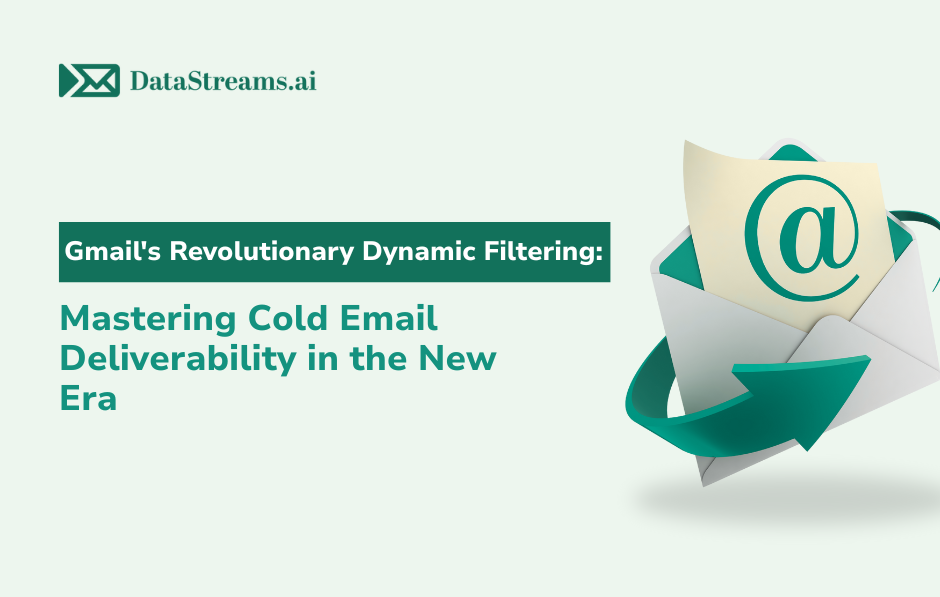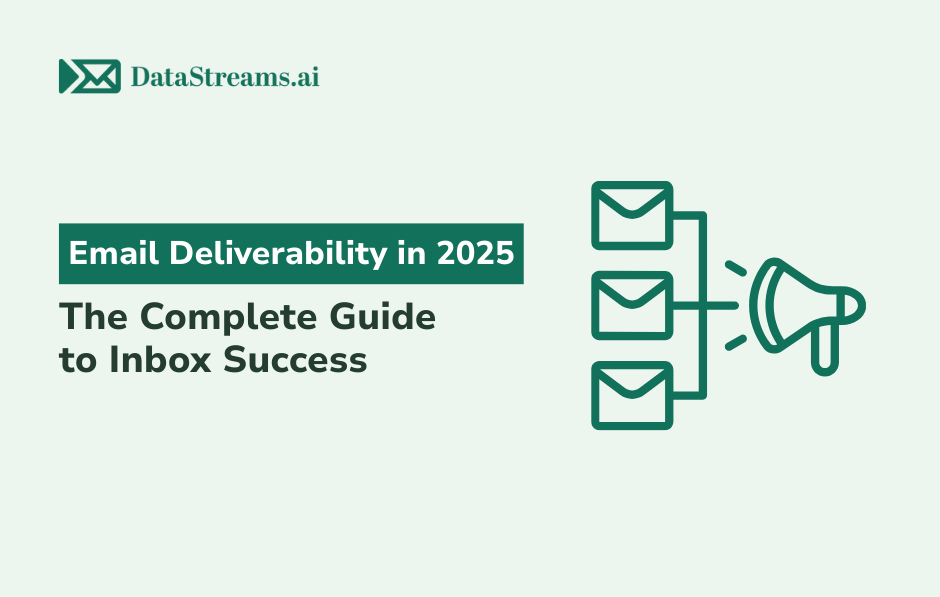The email deliverability landscape has evolved dramatically over the past few years, with major inbox providers implementing increasingly sophisticated filtering mechanisms. As we navigate through 2025, one question continues to dominate conversations among email marketers and deliverability experts: Which carries more weight in determining inbox placement – IP reputation or domain reputation?
The answer isn’t as straightforward as many would hope, but understanding the nuances can mean the difference between landing in the inbox or getting lost in the spam folder.
The Great Reputation Shift: What’s Changed in 2025
Gone are the days when a clean IP address alone could guarantee inbox delivery. Email service providers (ESPs) like Gmail, Yahoo, and Outlook have fundamentally transformed their approach to email filtering, creating a more holistic reputation ecosystem that considers multiple factors simultaneously.
The numbers tell the story: According to recent deliverability studies, domain reputation now influences up to 70% of inbox placement decisions, while IP reputation accounts for approximately 30%. This represents a significant shift from the 50-50 split we saw just three years ago.
But here’s where it gets interesting – this isn’t a simple either-or scenario. The most successful email programs in 2025 are those that understand how these two reputation types work together, creating a synergistic effect that maximizes deliverability.
IP Reputation: The Foundation That Still Matters
Your IP reputation remains the backbone of email deliverability, though its role has evolved. Think of it as your email program’s credit score – it establishes baseline trust with inbox providers.
What Drives IP Reputation in 2025:
Authentication Success Rates: Proper SPF, DKIM, and DMARC implementation isn’t optional anymore. ISPs are increasingly rejecting emails that fail authentication checks, regardless of content quality.
Sending Volume Consistency: Erratic sending patterns trigger red flags. A sudden spike from 10,000 emails to 100,000 emails without proper warm-up can devastate your IP reputation overnight.
Complaint Rates: The golden rule remains unchanged – keep complaint rates below 0.1%. However, what’s changed is how quickly ISPs react to spikes in complaints.
Spam Trap Hits: Perhaps the most damaging factor for IP reputation. Even a single hit to a pristine spam trap can impact deliverability for weeks.
The IP Reputation Advantage:
The beauty of IP reputation lies in its controllability. When you own your IP address, you have complete control over the sending practices that influence its reputation. This is why many enterprise-level senders still prefer dedicated IPs – they’re not at the mercy of other senders’ poor practices.
However, there’s a catch that many don’t realize: IP reputation requires significant volume to be effective. If you’re sending fewer than 100,000 emails per month, you’re likely better off focusing your efforts on domain reputation.
Domain Reputation: The New King of Deliverability
Domain reputation has emerged as the primary factor in inbox placement decisions, and for good reason. It’s harder to manipulate, more stable over time, and provides inbox providers with better insights into sender legitimacy.
The Components of Strong Domain Reputation:
Engagement Metrics: Open rates, click rates, and time spent reading emails now heavily influence domain reputation. Gmail’s recent algorithm updates place enormous weight on user engagement signals.
Content Quality Consistency: Domains that consistently send valuable, relevant content build stronger reputations than those with sporadic quality.
List Hygiene: Domains associated with clean, engaged lists naturally develop better reputations. This is where email validation becomes crucial – and we’ll explore this connection shortly.
Brand Recognition: Established brands with strong domain authority often enjoy better inbox placement, even with mediocre IP reputations.
Why Domain Reputation Dominates in 2025:
The shift toward domain reputation reflects inbox providers’ focus on user experience. They’ve realized that domain reputation better predicts whether recipients want to receive emails from a particular sender.
Consider this scenario: A legitimate business temporarily uses a shared IP with poor reputation but maintains excellent engagement rates and list hygiene. In 2025, their strong domain reputation often overrides the poor IP reputation, ensuring continued inbox delivery.
The Datastreams.ai Perspective: Where Email Validation Fits
After analyzing thousands of email campaigns through our validation platform at Datastreams.ai, we’ve observed a clear correlation between list quality and reputation health – both IP and domain.
Here’s what our data reveals: Senders who regularly validate their email lists maintain 40% better domain reputation scores and 25% better IP reputation scores compared to those who don’t.
The connection is logical: invalid emails, spam traps, and inactive addresses don’t just hurt your metrics – they actively damage both types of reputation. When you send to a list validated through Datastreams.ai, you’re not just improving deliverability; you’re protecting your long-term reputation assets.
The Validation-Reputation Connection:
Reduced Bounce Rates: Every hard bounce is a negative signal to ISPs. Our validation service identifies and removes addresses that would bounce, protecting your IP reputation.
Spam Trap Detection: Our advanced algorithms identify and flag potential spam traps, preventing the reputation damage that comes with hitting these honeypots.
Engagement Prediction: By identifying likely inactive addresses, validation helps maintain the high engagement rates that drive positive domain reputation.
The 2025 Strategy: A Balanced Approach
The most successful email programs in 2025 don’t choose between IP and domain reputation – they optimize both strategically.
For High-Volume Senders (1M+ emails/month):
Prioritize IP reputation foundation: Invest in dedicated IPs, implement proper warm-up procedures, and maintain consistent sending volumes. Your high volume gives IP reputation significant influence over deliverability.
Layer domain reputation optimization: Build brand recognition, focus on engagement, and maintain content quality. This creates a powerful combination that maximizes inbox placement.
For Medium-Volume Senders (100K-1M emails/month):
Start with domain reputation: Focus on engagement, content quality, and brand building. These factors will have more immediate impact on your deliverability.
Consider dedicated IPs selectively: If you can maintain consistent volume, dedicated IPs can provide additional control and reputation benefits.
For Low-Volume Senders (<100K emails/month):
Domain reputation is your lifeline: Shared IPs often provide better reputation than the limited data from low-volume dedicated IPs. Focus entirely on domain-building activities.
Maximize list quality: With limited volume, every email counts. Regular validation through services like Datastreams.ai becomes even more critical for maintaining reputation health.
The Technical Deep Dive: How ISPs Actually Evaluate Reputation
Understanding how major inbox providers weigh IP versus domain reputation can inform your strategic decisions:
Gmail’s Approach:
Gmail’s algorithm heavily favors domain reputation, particularly for senders with strong brand recognition. However, they still consider IP reputation as a trust signal, especially for newer domains.
Yahoo’s Method:
Yahoo maintains a more balanced approach, giving roughly equal weight to both reputation types. They’re particularly sensitive to authentication failures and engagement metrics.
Microsoft (Outlook/Hotmail):
Microsoft has increasingly emphasized domain reputation, especially following its recent algorithm updates. They’re also the most forgiving of temporary IP reputation issues if the domain reputation remains strong.
Common Reputation Mistakes That Kill Deliverability
Through our work at Datastreams.ai, we’ve identified several critical mistakes that damage both IP and domain reputation:
The “Volume Blast” Error:
Suddenly increasing sending volume without proper preparation damages both reputation types. ISPs interpret this as potentially suspicious behavior.
The “Set and Forget” Trap:
Failing to monitor reputation metrics regularly means missing early warning signs of problems. Both IP and domain reputation can decline gradually before manifesting as deliverability issues.
The “Blacklist Blindness” Mistake:
Perhaps the most overlooked error: not monitoring blacklist status. We’ve seen senders with perfect engagement metrics struggle with deliverability simply because they didn’t know their domain appeared on a blacklist. Our Blacklist Vigilance tool has caught everything from legitimate senders accidentally flagged by over-aggressive filters to compromised shared IPs affecting multiple users.
The “Authentication Afterthought”:
Poor SPF, DKIM, and DMARC setup doesn’t just hurt IP reputation – it increasingly impacts domain reputation as ISPs view authentication as a trust signal.
The “List Quality Neglect”:
Perhaps the most damaging mistake: sending to unvalidated lists. This single factor can destroy months of reputation building in days.
Measuring and Monitoring: The Tools You Need
Effective reputation management requires proper measurement. Here are the key metrics to track:
IP Reputation Metrics:
- Sender Score (Return Path/Validity)
- Microsoft SNDS data
- Google Postmaster Tools reputation scores
- Bounce rates and complaint rates
Domain Reputation Metrics:
- Google Postmaster Tools domain reputation
- Engagement rates (opens, clicks, time reading)
- Authentication pass rates
- Spam folder placement rates
The Critical Missing Piece: Blacklist Monitoring
Here’s something most email marketers overlook: You can have perfect engagement rates and still end up in spam folders if your IP or domain gets blacklisted.
We discovered this the hard way when analyzing client campaigns at Datastreams.ai. Senders with excellent reputation scores were experiencing sudden deliverability drops because they were unaware of blacklist additions. A single spam complaint or compromised shared IP can land you on multiple blacklists overnight.
This is why we developed our Blacklist Vigilance tool – it monitors over 100+ IP and domain blacklists every 24 hours, sending immediate alerts when issues arise. The data is eye-opening: domains that monitor blacklists proactively maintain 35% better average deliverability than those that don’t.
The Datastreams.ai Advantage:
Our platform provides comprehensive reputation monitoring that goes beyond basic validation. We help you understand how list quality impacts your reputation scores, monitor blacklist status in real-time, and provide actionable recommendations for improvement. It’s like having a 24/7 reputation guardian watching your email program.
Future-Proofing Your Reputation Strategy
As we look toward the rest of 2025 and beyond, several trends will continue shaping the reputation landscape:
Increased Machine Learning Sophistication:
ISPs are deploying more advanced AI to evaluate sender reputation. This means more nuanced signals matter, making list quality and engagement even more critical.
Enhanced User Privacy Measures:
With continued privacy regulations, traditional tracking methods are becoming less reliable. This makes direct engagement signals (like reply rates and folder actions) more valuable for reputation building.
Cross-Platform Reputation Sharing:
ISPs are increasingly sharing reputation data, meaning poor reputation with one provider can impact deliverability across multiple platforms.
The Verdict: Which Matters More in 2025?
Here’s the truth that many in the industry won’t tell you: The question itself is flawed.
In 2025, successful email deliverability isn’t about choosing between IP and domain reputation – it’s about understanding how they work together and optimizing both based on your specific situation.
For most senders, domain reputation has become the primary driver of inbox placement, but IP reputation remains the foundation that makes everything else possible. Like a well-built house, you need a strong foundation (IP reputation) and quality construction (domain reputation) to create something that lasts.
Your Action Plan: Building Both Reputations Simultaneously
Week 1-2: Foundation Assessment
- Audit your current IP and domain reputation scores
- Set up 24/7 blacklist monitoring (Datastreams.ai’s Blacklist Vigilance covers 100+ lists)
- Implement or verify authentication (SPF, DKIM, DMARC)
- Validate your email list through Datastreams.ai to establish baseline quality
Week 3-4: Engagement Optimization
- Segment your list based on engagement levels
- Create re-engagement campaigns for inactive subscribers
- Optimize sending frequency based on recipient behavior
Month 2: Monitoring and Adjustment
- Set up regular reputation monitoring
- Configure blacklist monitoring alerts for immediate threat detection
- Establish KPIs for both IP and domain reputation
- Create response protocols for reputation issues
Month 3+: Continuous Improvement
- Regular list validation and hygiene maintenance
- Content optimization based on engagement data
- Gradual volume increases with proper monitoring
The Bottom Line: Quality Drives Everything
Whether we’re talking about IP reputation or domain reputation, the underlying driver remains the same: quality. Quality lists, quality content, quality engagement, and quality sending practices.
This is where email validation becomes not just helpful, but essential. At Datastreams.ai, we’ve seen how proper list hygiene serves as the foundation for both types of reputation. When you validate your lists regularly, you’re not just improving deliverability – you’re protecting and building the reputation assets that determine your long-term email marketing success.
The senders thriving in 2025 understand this connection. They don’t just buy email validation as a one-time fix – they integrate it into their reputation management strategy, using clean lists as the foundation for building both IP and domain authority.
In the end, the question isn’t which reputation matters more – it’s whether you’re building both types of reputation on the solid foundation of validated, engaged email lists. That’s the real secret to email deliverability success in 2025 and beyond.
Ready to build stronger IP and domain reputation through better list hygiene and comprehensive monitoring? Start with a free email validation analysis at Datastreams.ai, and protect your reputation with 24/7 blacklist monitoring that keeps you ahead of deliverability threats.

